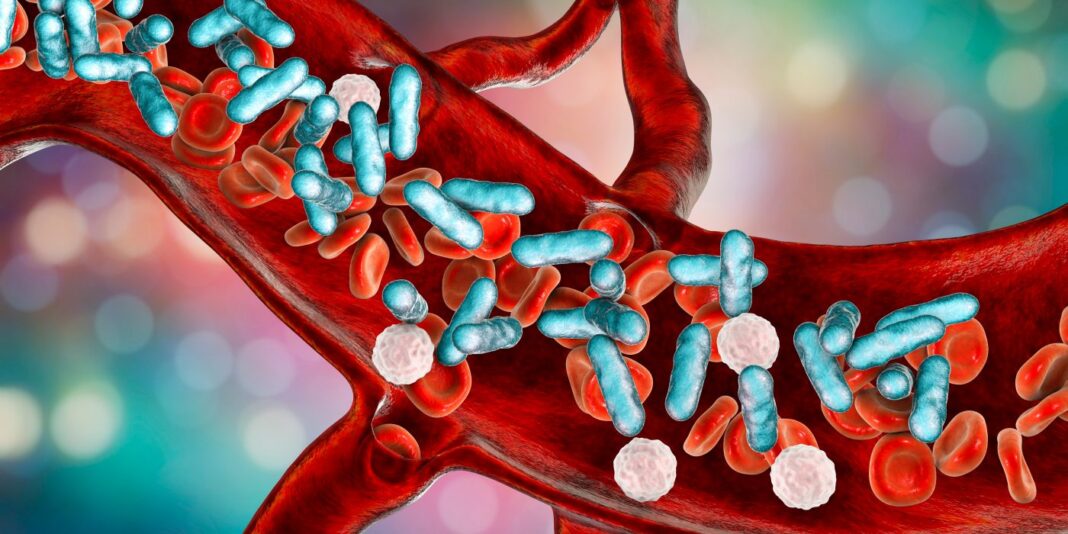Researchers at the Baylor College of Medicine report that infusion of new, healthy hematopoietic stem and progenitor cells (HSPCs) from bone marrow could improve sepsis outcomes in a mouse model, with the hopes of eventually translating into new therapeutic strategies for sepsis in humans. Their study “Hematopoietic stem and progenitor cells improve survival from sepsis by boosting immunomodulatory cells” appears in eLife.
“New therapeutic strategies to reduce sepsis-related mortality are urgently needed, as sepsis accounts for one in five deaths worldwide. Since hematopoietic stem and progenitor cells (HSPCs) are responsible for producing blood and immune cells, including in response to immunological stress, we explored their potential for treating sepsis,” write the investigators.
“In a mouse model of Group A Streptococcus (GAS)-induced sepsis, severe immunological stress was associated with significant depletion of bone marrow HSPCs and mortality within approximately 5–7 days. We hypothesized that the inflammatory environment of GAS infection drives rapid HSPC differentiation and depletion that can be rescued by infusion of donor HSPCs. Indeed, infusion of 10,000 naïve HSPCs into GAS-infected mice resulted in rapid myelopoiesis and a 50–60% increase in overall survival.
“Surprisingly, mice receiving donor HSPCs displayed a similar pathogen load compared to untreated mice. Flow cytometric analysis revealed a significantly increased number of myeloid-derived suppressor cells in HSPC-infused mice, which correlated with reduced inflammatory cytokine levels and restored HSPC levels.
“These findings suggest that HSPCs play an essential immunomodulatory role that may translate into new therapeutic strategies for sepsis.”
“Current treatment of sepsis includes transfusions of granulocytes, another type of immune cell, but this treatment has limited efficacy, a heavy dependence on large quantities of cells and frequent dosing. Here, we show an alternative approach that uses just a fraction of the cell number,” said Katherine King, MD, PhD, associate professor of pediatrics–infectious diseases at Baylor College of Medicine and Texas Children’s Hospital and senior author of the paper. “A lot more work will need to be done to understand the potential and safety of HSPC infusion as a new treatment for sepsis.”
Excessive signaling of cytokines
Sepsis induces excessive signaling of cytokines, molecules that relay immunological stress throughout an organism to establish an immune response. To understand the role of HSPCs, which are responsible for the day-to-day production of all blood and immune cells, during acute infection, the researchers studied infection with Streptococcus pyogenes, common bacteria that cause several diseases, including sepsis. This infection can infiltrate the bloodstream and other organs, causing high levels of inflammatory cytokines.
The researchers found that the infection significantly depletes HSPCs in the bone marrow and hypothesized that infusion of a healthy batch of these cells could improve bacterial clearance, reduce tissue damage, and prolong survival. They found that mice that received the infusion showed a milder disease and lived longer than mice that did not receive the infusion treatment.
Treated mice showed a significant decrease in inflammatory cytokines, especially cytokines that are known drivers of sepsis. Surprisingly, they also found that infusion did not significantly impact bacterial burden or their spread to other tissues.
“The findings suggest that infusion with HSPCs is beneficial during Streptococcus infection and promotes survival by a mechanism other than bacterial clearance,” continued King. “We found that treated mice restored immune cells that are responsible for regulating immune responses and decreasing inflammation.”
For the past decade, King’s lab has worked to characterize the impact of infection and inflammation on bone marrow hematopoietic stem cell function, and this research reportedly is the first to show the direct role of hematopoietic stem cell division and differential in survival from sepsis.
The next steps in the research include understanding which subsets of HSPCs confer the strongest benefit, with particular attention to short-term progenitors that might dampen inflammation without creating concerns for long-term problems like graft versus host disease.



